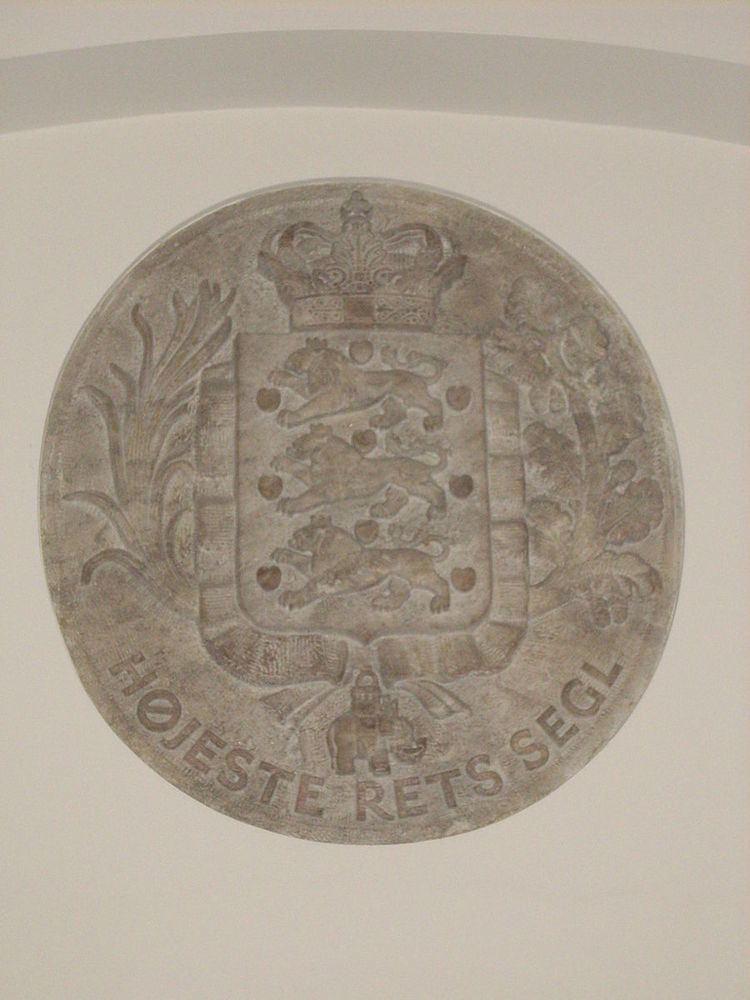Country Kingdom of Denmark Website Official Website Phone +45 33 63 27 50 Established February 14, 1661 | No. of positions 20 Currently Poul Søgaard Number of positions 20 | |
 | ||
Judge term length Mandatory retirement at age 70 Address Prins Jørgens Gård 13, 1218 København K, Denmark Similar Eastern High Court, Advokats, Statsmini, Beskæftig, Justitsmin | ||
The Supreme Court (Danish: Højesteret, lit. Highest Court) is the supreme court and the third and final instance in all civil and criminal cases in the Kingdom of Denmark. It is based at Christiansborg Palace in Copenhagen which also houses the Danish Parliament and the Prime Minister's office.
Contents
History
The Supreme Court was founded on 14 February 1661 by King Frederik III as a replacement of King Christian IV's King's Court (da. Kongens Retterting). It was based at first Copenhagen Castle later Christiansborg Palace, which was built in its place on the same site at Slotsholmen, and originally consisted of 30 justices. From its foundation and until the adoption of the Constitution of 1849, the king was the formal head of the Supreme Court but he only attended the first meeting each year and an office as justitiarius was therefore instituted as early as 1674 (from 1919 with title of President).
After the 1794 Fire of the Christiansborg Palace, the Supreme Court moved first to the Prince's Mansion (da. Prinsens Palæ) until 1854, now housing the National Museum of Denmark, and then to one of the four mansions of Amalienborg Palace (1854–1864), before moving back to Slotsholmen. After the fire of the second Christianborg Palace in 1884 the Supreme Court had to move once again and was based at Bernstorffs Palæ in Bredgade until 1919 when it could move back to the present Christiansborg Palace.
Function
The Supreme Court functions as a civil and criminal appellate court for cases from the subordinate courts. Since a decision cannot normally be appealed more than once, County Court cases rarely reach Supreme Court-level, though this may be the case if the independent Board of Appeals grants a leave of appeal.
Significant civil cases with issues of principal, however, are typically deferred to one of the two Danish High Courts as courts of first instance. In those cases sentences from the Eastern or Western High Courts (Østre Landsret and Vestre Landsret) may be directly appealed to The Supreme Court.
As its name indicates, the Supreme Court is the highest Court in the Kingdom of Denmark and its judgments cannot be appealed to another Danish court. It is split into two chambers which both hear all types of cases. A case is heard by at least five judges. In all, the court consists of normally 15 judges and a President.
Unlike criminal cases in the lower courts, the Supreme Court does not deal with the issue of guilt. However, the basis on which the lower court reached its verdict may be brought into consideration and edited. In criminal trials by jury in the first instance, the defence may appeal on grounds of judicial error regarding the judges' direction to the jury (the summing-up of the theoretical foundations, which should be taken into consideration when the jurors deliberate).
